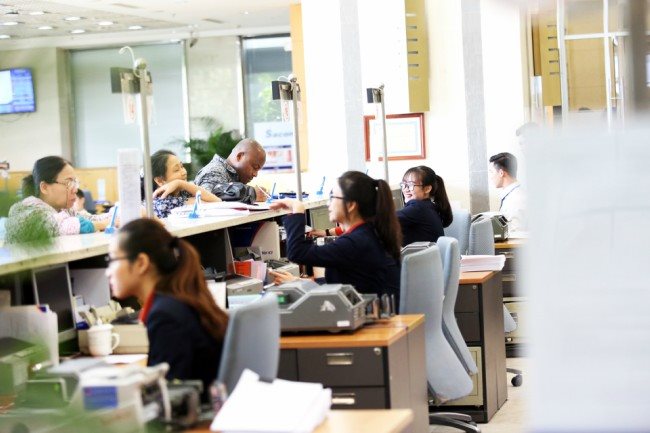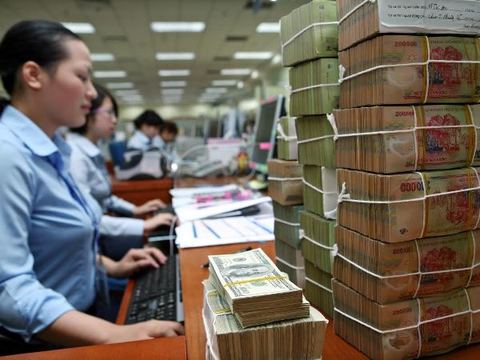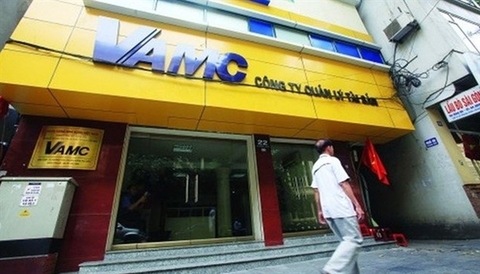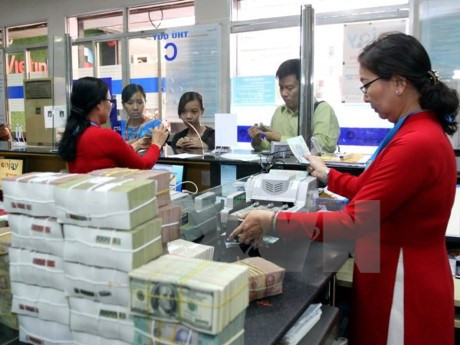Banks should compete relying on their unique strength
Banks should compete relying on their unique strength
Not only should the State Bank of Vietnam maximize its flexible and effective monetary policy, but commercial banks also need to actively improve their internal strength and gain their own competitive advantages to be on the same footing with regional rivals. This is one of the key messages passed on during the Banking Panorama Forum 2019 jointly hosted by the Saigon Times Group and the central bank in Hanoi on May 8.

Participants in the forum agreed with one another on the key role of the State Bank of Vietnam (SBV), the central bank, in maintaining a flexible monetary policy to ensure the financial market’s stability in 2019, the year in which negative impacts on the Vietnamese economy are projected given global market fluctuations.
Citing this positive point, Can Van Luc, a banking expert, contended that two bright spots in the banking system can be found. The central bank has been faithful to its relatively stable foreign exchange policy during the past three years and foreign reserves have increased remarkably, which partly enhances the credibility in the domestic currency and its convertibility in the future.
According to Nguyen Tu Anh, deputy head of the Monetary Policy Department of the SBV, in early this year, a host of arising challenges may impact the Vietnamese economy, such as the global economy slowing down, Sino-American trade tension, EU-U.S. trade dispute and a possible comeback of trade protectionism. These adverse effects have prompted investors to flee from emerging economies, especially those with unstable macroeconomic situation. In such a context, however, international credit rating institutions have raised Vietnam’s credit rating.
That is because, said Anh, the central bank has been active in its regulation of the banking system by revising up the central rate to expand the margin with which the market can move up or down. Since last July, when the market began to fluctuate considerably, the SBV has had to do two jobs at a time. While closely monitoring the market, the central bank has to opportunely adjust their tools. This indicates that the central bank has been fully aware of risks and ready to interfere by creating shocks with its tools. In this regard, the SBV has pacified market sentiment by satisfying adequately market demand for legitimate foreign currencies, which also means that the central bank can be proactive and capable of coming up with countermeasures.
Vo Tri Thanh, former vice director of the Central Institute for Economic Management (CIEM), said last year the central bank was tactful about both meeting liquidity demand and keeping interest rates stable on the Interbank market. Although there were times in which the Interbank rate was high to maintain the foreign exchange rate, they did not seriously impact bank interest rates, in particular, lending rates. This is arguably a success attained by the SBV that has responded to the market with appropriate reactions.
Thanh added that the SBV has been implementing its three basic duties since 2012. They include the regulation of the stable monetary policy; bad debt management—which has become better due to Resolution 42; and the restructuring of the banking system on the way to compliance with the Basel II Accord.
However, Thanh argued that there remain three big issues which require the SBV’s attention so as to effectively support the healthy development of the financial system.
First, the current monetary policy includes way too many intermediate goals. “The total money supply, M2, and credit are managed in quantity and, at the same time, attached to interest rates,” he said. “Foreign exchange, despite being more flexible, is still to a certain extent a policy tool.”
According to Thanh, the central bank should be prepared for the medium-term future, that is switching to inflation targeting at all costs, possibly inflation targeting which is adjustable. The financial system must then be managed in accordance with prices, and the intermediate target must be prices, or in other words, interest rates. This is a formidable challenge for the central bank and should be adequately addressed.
Secondly, Vietnam’s economic openness is ever greater and hence in the next 10 years Vietnam dong should be relatively convertible. This was a goal set 20 years ago, which failed to materialize. The failure has partly curbed new capital inflow considering the fact that recently portfolio investment and capital via merger and acquisition have expanded considerably in the country’s profile of foreign investment. In fact, foreign investment attraction is no longer simply foreign direct investment pooled into factories.
The third issue in which Vietnam is still lagging behind, said Thanh, relates to the development of Fintech and the digital economy whose component is non-cash payments. As risky as it may be, Fintech is a tool for fighting loan sharks, ensuring Vietnam’s commitments to total financial implementation, and guaranteeing universal financial services at reasonable fees.
Banks should gain their own competitive advantages
Pham Hong Hai, CEO of HSBC Vietnam, argued that the country’s banks are fortunate because they are in a market with great growth potential. Hai’s argument is evidenced by the fact that a long lineup of foreign banks is waiting for a chance to enter the Vietnamese market although already present here are more than 100 banks.
Currently, only a few banks in Vietnam have the appropriate scale or feasible strategy for reaching the regional status. Local banks are facing difficulty in positioning and setting development strategies. The majority of them have development models similar in one way or another and compete with one another relying on prices, not on making a difference.
Hai further explained what he said by telling the story of HSBC. According to Hai, HSBC used to develop both retail and business banking in every country it set foot in. However, it is history now. HSBC has come to realize that in some countries, the bank could not compete successfully because it failed to maximize its global system there. HSBC has thus sold out certain arms to focus on areas it is really competitive by maximizing the strength of its global system and serving customers with a need to use its global system.
“Finding one’s own competitive advantages is the question posed to every Vietnamese bank,” said Hai. “Each bank should find out its own strength and formulate strategies relying on that strength.”
Furthermore, Hai maintained that each bank should tackle the following issues to be able to consolidate its internal strength and develop in the future. First, it needs financial transparency, from branches to the headquarters. Secondly, every conflict between the bank’s owners and the management must be handled. If bank owners want to use capital from their bank to extend loans to their companies, it is really tough for the bank in question to develop. Finally, more diverse products and services must be added to those currently available. Otherwise, the bank will find it hard to expand, said Hai.
“Notably, banks should place emphasis on the digitalization of their services and building training plans so that their staff can be kept updated to new trends and avoid being sidelined during the digitalization process,” he said. “That is also a great challenge for banks whose networks are so extensive and staff number in the thousands.”
Sharing Hai’s view, Nguyen Thi Hoa, vice director of the Banking Strategy Institute under the SBV, said banks should embrace a swift change from the “credit-only” business model to product diversification and non-credit banking services. Banks should also improve their professionalism in providing e-banking products and services, and export of financial services, among others, Hoa said.










